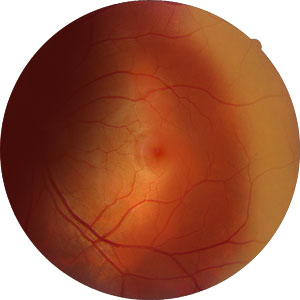Cellular alterations in some persons may make them more likely to develop eye cancer. One type of cancer that can affect the eye is lymphoma.
Primary intraocular lymphoma (PIOL) is one kind of eye cancer. Both the retina and the vitreous within the eye are capable of developing PIOL. The optic nerve in the back of the eye is also impacted.
In eight out of ten cases, PIOL affects both eyes. In many cases, PIOL patients also have lymphoma in a specific area of the brain. Primary central nervous system lymphoma is the term used for this.
Non-B Hodgkin’s cell lymphoma is usually typically the type of lymphoma that characterises PIOL. The majority of those with it are older or suffer from immune system disorders.
People who have compromised immune systems are susceptible to developing primary intraocular lymphoma (PIOL).
Blurred vision, reduced or lost eyesight, floaters (little dots or lines in your field of vision), redness or swelling in the eye, increased sensitivity to light, and eye pain are among the most typical symptoms of eye lymphoma (though this is rare)
Even though both eyes are typically affected by lymphoma, one eye may experience more severe symptoms.
People who have rheumatoid arthritis or other autoimmune diseases, specific immune system-affecting conditions, AIDS (acquired immunodeficiency syndrome), and are using specific drugs to prevent the body from rejecting a transplanted organ are at risk for developing eye lymphoma.
Even without any of these risk factors, ocular lymphoma might still develop.
In addition to asking you about your symptoms, your ophthalmologist will examine your eyesight and eye movement. To acquire a clear view of the inside of the eye, the doctor will use an ophthalmoscope, a device having a light and a small magnifying lens.
There may be some imaging tests performed. These aid in the ophthalmologist’s ability to examine the tumour and determine whether the cancer has spread.
Typically, a biopsy is required. Here, a sample of cells or tissue is obtained for microscopic examination and testing. An ophthalmologist typically performs a surgery known as a vitrectomy for a biopsy. This is when they take samples of the vitreous, which resembles jelly, by inserting tiny instruments into the eye.
External radiation treatment and chemotherapy are typically used to treat eye lymphoma (or sometimes a combination of both).
Using medication to kill cancer cells is known as chemotherapy. It can be administered directly into the fluid in the spine, through a vein, or into the eye.
With radiation therapy, cancer cells are killed and tumours are reduced in size. Depending on where the malignancy is, radiation may be directed only at the affected eye or at both eyes.
The brain and spinal cord may potentially be the targets of radiation therapy. This can stop cancer from spreading there or assist eliminate cancer cells that are not readily apparent.
At The Eye Center- Dr. Mahnaz Naveed Shah & Associates our team of eight ophthalmology subspecialists/ eye specialists, eye surgeons who are considered amongst the very best eye specialists in Karachi and in Pakistan, have the diagnostic and treatment capabilities to treat from the simplest to the most complex patients. We work hard to provide our patients with the best possible medical and surgical eye care, in a state of the art purpose built eye care facility. We offer the entire array of medical, laser and surgical treatments to help provide patients the best possible care in the most efficient, safe and ethical manner.
If you need an appointment, please contact us at 03041119544 during our working hours or leave us a WhatsApp message at +923028291799 and someone will connect with you. Walk-in appointments are also available for emergencies. We can also be reached through our web portal on www.surgicaleyecenter.org

